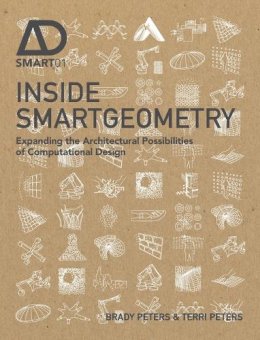
Stock image for illustration purposes only - book cover, edition or condition may vary.
Inside Smartgeometry: Expanding the Architectural Possibilities of Computational Design
Terri Peters
€ 54.03
FREE Delivery in Ireland
Description for Inside Smartgeometry: Expanding the Architectural Possibilities of Computational Design
Hardcover. Smartgeometry (SG) is a key influence on the architectural community who explore creative computational methods for the design of buildings. An informal international network of practitioners and researchers, the group meets annually to experiment with new technologies and collaborate to develop digital design techniques. Series: Ad Smart. Num Pages: 272 pages, illustrations. BIC Classification: AMC; UGC. Category: (P) Professional & Vocational. Dimension: 253 x 197 x 23. Weight in Grams: 1056.
Read more
Smartgeometry (SG) is a key influence on the architectural community who explore creative computational methods for the design of buildings. An informal international network of practitioners and researchers, the group meets annually to experiment with new technologies and collaborate to develop digital design techniques.
When SG was founded in 2001 by London-based architects and friends Hugh Whitehead (Foster...
Product Details
Publisher
John Wiley & Sons Inc United States
Number of pages
272
Format
Hardback
Publication date
2013
Series
Ad Smart
Condition
New
Number of Pages
272
Place of Publication
New York, United States
ISBN
9781118522479
SKU
V9781118522479
Shipping Time
Usually ships in 7 to 11 working days
Ref
99-50
About Terri Peters
Brady Peters is an architect. A PhD fellow at the Centre for Information Technology and Architecture (CITA) in Denmark he was previously an Associate Partner at Foster + Partners and a key member of the Specialist Modelling Group. He has taught at the Royal Danish Academy of Fine Arts, the University of Ghent, the University of Nottingham, and has been...
Read moreReviews for Inside Smartgeometry: Expanding the Architectural Possibilities of Computational Design
